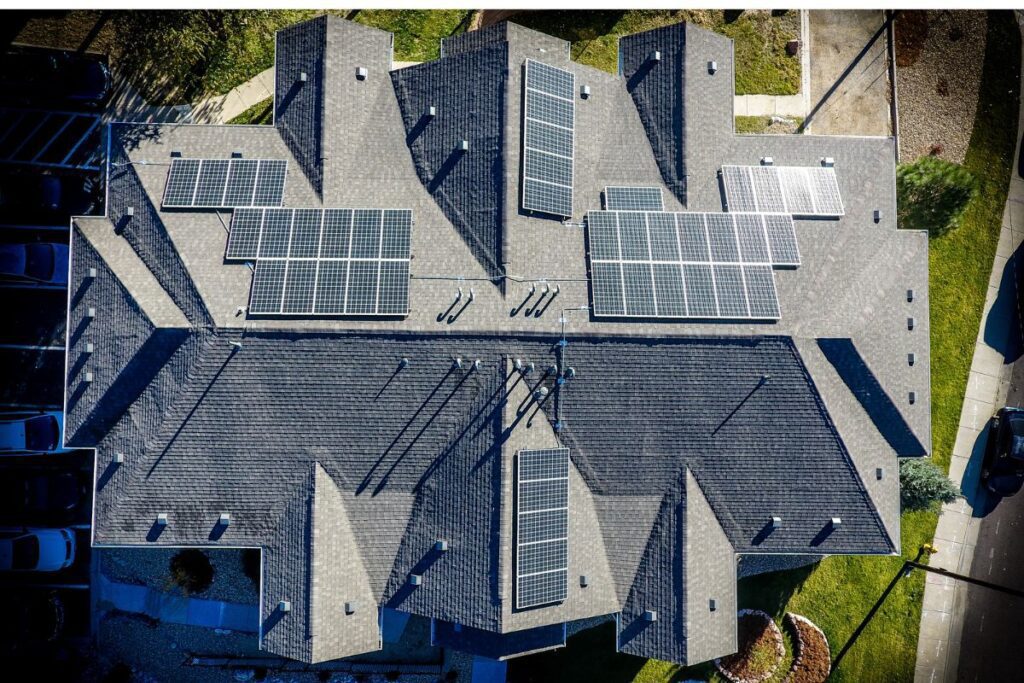Solar panel installation is an expensive choice to make. You need to calculate all the metrics before making the decision. Understanding the cost of a solar panel will help you calculate the cost of total installation cost. A single 250-400 watts solar panel will cost around $140-$250, and it can go up to $500 based on different factors such as brand, wattage, capacity, and type. That means the cost per watt will be $0.60- $1.20.
But remember that the solar panel is a part of the total solar system installation, and you need to pay for other equipment like inverters and mounting hardware, permits, and labor. Combined with that, the actual cost will increase to $2 to $3 per watt. The overall cost of the full system installation for a standard 6 kW panel will be $13500-$50000 without incentives. Get complete ideas about how much does 1 solar panel costs.
Common Factors Influencing the Solar Panel Costs in Wisconsin

Wattage
Solar panels come in different wattages, and the price range for different wattages is different as well. You need to pay more for higher wattage since it will produce more electricity output for your property compared to a lower wattage panel.
Brand and Manufacturer
Brand always matters and impacts the cost. Quality Solar panel brands, for example, SunPower, offer better performance and warranties. At the same time, these brands offer a higher average cost per panel. On the contrary, cheaper brands offer lower upfront costs, but they will lead to lower return on investment over time.
Panel Efficiency
The solar panel efficiency is measured with an efficiency rating. It determines the electricity generation per panel. A higher rating means fewer panels yet more energy production. That’s why panels with higher efficiency ratings cost more than panels with lower efficiency.
System Size
It is obvious that larger systems will cost more since they produce more power. However, if you consider the per-watt cost, it will be less than that of smaller-sized panels.
Type of panels
Panel types also impact the overall cost of a single solar panel. You need to pay more for high-quality, efficient panels like monocrystalline.
Location and Shipping of Solar Panel Systems
Your location also impacts the solar panel costs. If the company has to ship the panels to remote areas, the cost will increase for sure due to higher logistics and transportation fees.
Supply Chain and Market Demand
The price of a product always depends on supply and demand. If any global events happen that lead to material shortages or a higher demand shift, the cost of solar panels will surely rise.
Certifications and Warranties
Some panels come with longer warranties and third-party certifications. These panels are more expensive compared to other panels.
Government Incentives and Tax Credits
The federal solar tax credit offers a 30% incentive that reduces the per-panel cost. Some regions also offer solar rebates, property tax exemptions, and net metering.
Quantity Purchased
Purchasing the panels in bulk through a community solar program will reduce the per-panel cost. Solar companies will offer a discount for bulk purchases.
Additional cost factors beyond the Solar Panel (Hidden costs)
Though we are talking about the single panel cost, knowing additional costs before installation will help. The additional costs are,
- Permitting costs, monitoring, surge protection, soft costs
- Solar batteries, solar inverters, and solar panel maintenance
- Ground-mounted systems vs rooftop systems.
- Related equipment costs
Residential vs. Commercial – Differences in Solar Panel Costs
A residential solar panel cost is higher since commercial solar panels come with a larger capacity. The overall price of a commercial panel is higher. However, due to economies of scale and bulk installation, the cost goes down.
Payback Period and Return on Investment (ROI)
It takes about 8 and 12 years to get the payment back from the solar panels. However, the time will vary depending on the size, type, capacity, and sunlight exposure. If you can manage incentive programs and increase annual electricity savings, the ROI time will be faster.
Common Mistakes When Estimating Solar Costs
- Do not focus on the panel price only. You need to pay for labor, permits, and hardware.
- Inverters and batteries add significantly to the total costs. So consider that.
- Do not forget about the long-term maintenance, such as inspection, cleaning, and repair.
- Try to avoid overestimating or underestimating the energy neds.
- Missing or skipping federal incentives and rebates is a bad idea.
- Do not opt for DIY if you are inexperienced.
- Never go for the cheapest option.
- Do not avoid flexible financing options.
How to reduce the cost of 1 solar panel
- Purchase in bulk to get the discount. Go for a community program or homeowners association.
- Choose panels with a standard size and efficiency.
- Go for polycrystalline to save money. But it will influence long-term savings.
- Get quotes from multiple sources and pick the most inexpensive yet quality one.
- Try to buy directly from wholesalers or manufacturers to reduce initial investment.
- Consider refurbished items, though it is not recommended.
- Always take advantage of tax incentives and rebates. Try to get additional incentives.
- Try to install yourself if qualified.
- Avoid unnecessary add-ons.
- Consult industry experts to get an idea.
- Avoid advanced monitoring systems.
Need More Info? Read Our Recent Articles
How does the solar heating system work
How is solar heating used in households
Monthly bill for solar panels
Is Solar Energy A Good or Bad Thing to Buy
